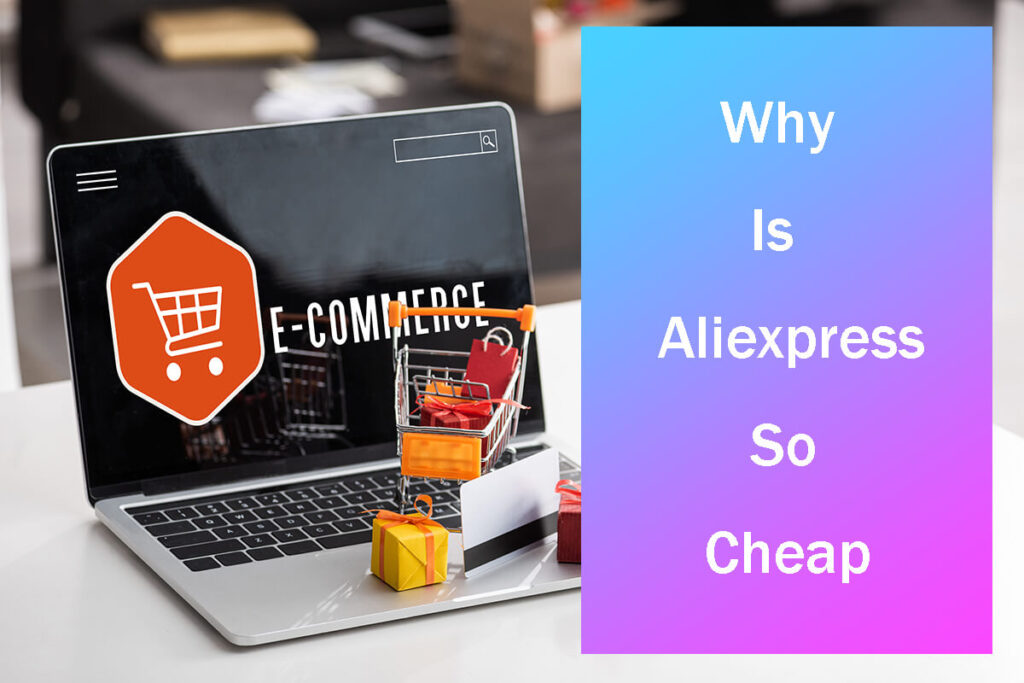How to Open an Online Store: 9 Easy Steps + Mistakes to Avoid
Ask a friend or a stranger down the street how they shop for their needs or necessities. And, odds are, they’re clicking their way through online shopping on a regular basis.
Of course, brick-and-mortar stores are here to stay. But with projections indicating that there will be at least 2.7 billion online shoppers worldwide by 2025, embracing the online realm is no longer an option but a necessity if you want to succeed in a business of any niche.
This post goes over the exact steps you need to take to open an online store successfully. Start your eCommerce journey on a strong footing and join the ranks of professional online retailers!
Is eCommerce worth it?

With the right strategies, eCommerce, or electronic commerce, can definitely be worth it. In fact, it might even be one of the best investments in today’s day and age.
Selling online makes it incredibly easy for customers to access your products and services, and studies have long proven that convenience is one of the key driving factors of consumer behavior.
But that’s not all. On top of offering convenience, here are…
3 more benefits of leveraging eCommerce
Lower overhead costs
Overhead costs are inevitable in businesses. But, if we compare the costs of starting a traditional brick-and-mortar store with an online store, the winner in terms of being more affordable is undoubtedly the latter option.
To name some cost-related advantages of selling online, you can bypass costly factors like rent, repairs, interior decoration, or utilities when selling your products.
Even better, if you choose “sell first, pay later” business models like dropshipping or print-on-demand, you won’t even have to pay for inventory upfront, allowing you to jump straight into business even with a limited budget.
Easier information tracking
As you likely already know, business is all about tracking information and numbers. Your success depends on making decisions based on data such as how many items you sell, how much your profits are, and which products sell more than others.
Luckily, eCommerce simplifies information tracking way more than a traditional business model.
On most platforms, every transaction is automatically recorded. Not to mention, you can easily access online tools available to streamline tasks such as monitoring inventory levels and managing accounting for your online store.
Sell 24/7
Perhaps my personal favorite aspect of being an eCommerce entrepreneur is the ability to receive orders around the clock. You can bypass the revenue limitations of only opening shop from 9 AM to 9 PM, for example, and accommodate customers even when you’re asleep.
More availability means more accessibility, ultimately resulting in higher sales for you.
Just remember to make your online store’s buying experience as convenient as possible for your customers. This way, you can avoid them bouncing off due to buying difficulties or lack of information, especially during the hours when you’re unavailable to accommodate their concerns.
9 steps to open an online store

Ready for the fun part? Here are the exact steps you must take to open an online store.
#1: Choose a business niche
The first step to getting the ball running in your eCommerce journey should always be choosing a business niche.
Yes, it’s possible to sell pretty much anything online. But while selling as many items as possible may seem to give you more chances to increase sales, this tactic is actually more of a recipe for your big biz to lose focus and direction.
See, focusing on one niche allows you to enjoy benefits such as:
- Strongly targeting a specific audience
- Building authority over your niche
- Conserving time and resources
Plus, by being a niched business, customers will likely see you more as a “brand” rather than a generic “online convenience store.”
And as a consumer yourself, surely you know how brands evoke a sense of trust, loyalty, and identity more effectively than supermarkets.
Heads up: Don’t treat this step as a one-and-done task. Choosing a niche typically takes a series of trial-and-error, which involves tons of research, surveys, and maybe even temporarily selling different products to test market interest.
#2: Pick a type of eCommerce business

After the niche-picking adventure, it’s time to figure out which type of eCommerce business fits your needs the most.
It’s not enough to simply know you’ll be starting a business-to-consumer (B2C) store, for example.
You must decide how you want to handle inventory and product sourcing for your online store. Because let’s be honest– that’s where most of the work comes from.
No need to be overwhelmed, though. Let me share some of the most successful (and beginner-friendly) types of eCommerce to get you started.
Dropshipping
Working for a dropshipping agent myself, it goes without saying that dropshipping won’t miss the top of this list.
If I were to describe this business model based on my experience, I’d say it’s easy on the wallet, relatively laid-back, and undoubtedly low-risk.
So, what exactly is dropshipping?
Simply speaking, building a dropshipping store is creating a reliable virtual bridge for customers to access or purchase your suppliers’ products.
When orders are placed, the suppliers will ship directly to your customers, freeing you from the burdens of inventory management and all the hassles and expenses that come along with it.
In between the process, you can earn profits by marking up the prices set by the suppliers.
Super convenient, right?
But as they say… wait— there’s always more.
There’s a way to make this eCommerce type even more seamless and profitable. How? Just hire the help of dropshipping professionals like Sup Dropshipping to help you every step of the way with services such as product sourcing, branding, marketing, and customization.
Literally, everything.
Biases aside, dropshipping is definitely the top option for aspiring eCommerce entrepreneurs who want a low-cost, low-risk, but potentially high-reward business model.
Wholesaling and warehousing
Think of wholesaling as the virtual version of a traditional brick-and-mortar store. You stock up on products purchased wholesale in your own warehouse. After that, when a consumer places an order, you’ll personally ship the goods to them.
This type of eCommerce will likely be suitable for entrepreneurs who:
- Already have inventory for their physical storefront
- Prefer getting high-profit margins per product
- Want to be more involved with the packaging and order fulfillment process
White labeling
White-labeled products are like “blank slates” offered by manufacturers that you can then design, pack, and sell under your own branding.
For example, a manufacturing company may sell you plain white sneakers, and for an added fee, the manufacturer can label them using your own logo and brand name.
White labeling is great for putting yourself out as a legitimate “brand” from the get-go.
But there’s a slight catch: this type of eCommerce is more or less a no-turning-back journey.
Once you’ve stocked up on white-labeled goods (which often have wallet-sinking high minimum order quantities), you can’t exactly return them to your suppliers if you decide not to continue selling anymore.
#3: Find profit-making products

Have you already tried selling products or services before? Then, by now, you’ll know that not every item sells well.
I remember chatting with a friend who does dropshipping. He was in the sportswear niche, and while his black and white pairs of socks were selling like hotcakes, his pink socks were… let’s just say– never quite as popular.
It’s crazy, right? Just a different color can make all the difference.
But, honestly, this is just one of the countless examples that show the importance of picking the right products to drive sales.
So, Jack, exactly what type of products should you go for?
I mean, there’s not really such thing as a secret sauce for this process. Just try to ensure each product you source is of high quality, is in high demand, and can still be affordable even after factoring in your profit margins.
Luckily, there are plenty of ways to find winning products that fit all of these criteria.
At the top of my head, I can think of using Google Trends, spying on your competitors’ advertisements, and using product research tools online.
The easiest route, though, is to just jump straight to hiring the help of professionals. Because trust me, sourcing companies like Sup Dropshipping recommend products that are much more likely to succeed than products you find on your own.
After all, that’s exactly what they do for a living.
#4: Establish a brand
Let’s have some fun with a quick quiz.
What brands come to mind when you think of the following prompts?
- Golden arches with a red background
- Iced coffee served with a dark green straw
- A partially-bitten apple
If you thought of McDonald’s, Starbucks, and Apple in that same order, you nailed it! This just proves how powerful branding can really stick with consumers.
Now, logos, brand colors, and unique brand names may all sound like things only suitable for big corporations. But guess what? Even those giant companies started building their brands from day one, contributing to their success.
So, if you want your store to stand out and stick in people’s minds, focus on building a strong brand right from the start.
The internet has all the resources you need to DIY this process. So, don’t worry; branding doesn’t have to make a dent in your budget.
#5: Choose an eCommerce platform.
Choosing a platform to sell online is kind of similar to picking a spot for your physical store.
Just as you can choose between renting at the mall, setting up a stall, or having a garage sale in the real world, there are different options online as well.
Let me share my top 3 favorite eCommerce platforms to help you narrow down your choices.
Social media platforms
Examples: Facebook, TikTok, and Instagram.
Pros:
- Usually part of the daily routine of people
- You’re likely already using one of them
- Advertising and marketing are easier (just post regularly)
Cons:
- Not built for eCommerce
- Can be hard to stand out if you don’t have SMM skills
Online Marketplaces
Examples: Amazon, Etsy, and eBay.
Pros:
- Home for actually purchasing stuff online
- Create a store and list products in minutes
- The interests and finances of you and your buyers are protected by the platform
Cons:
- You’ll often be charged multiple fees
- Potential customers can easily find cheaper or better alternatives within the platform
Own eCommerce site
Examples: Wix, Shopify, and Ecwid.
Pros:
- Wide control over your store’s interface, features, and style
- Often the cheaper option for businesses with high order volumes
- Access to tools and software that help make eCommerce more manageable
Cons:
- Requires more time and effort to set up your store
- Little to no free traffic, so spending on marketing is often necessary
#6: Build and optimize your online store
So, you’ve got your niche, products, and eCommerce platform all sorted out. Now what?
Well, it’s time to build and fine-tune your online store.
This process might seem like a big task, but honestly, it’s all about paying attention to the tiniest details. Think of your store like polishing a gem before showing it off to the world.
So, here are the common mistakes you should watch out for to avoid unexpectedly making your online business look sloppy:
- Blurred/misaligned product photos
- Typographical or grammatical errors
- Not optimizing the product description of each listing
Before you proceed to the next step, make sure to also double-check factors such as prices, shipping options, and product descriptions. You wouldn’t want to suffer negative profit margins because of silly mistakes like losing an extra digit in the product price or something.
#7: Launch your store
It’s time for the most-awaited part of having your store up and running. But before you go crazy about sharing your newly found business, here’s a tip I always share with our dropshipping partners:
Take a moment to browse through your store as if you were a customer. Yep, put yourself in their shoes.
And here’s an even better idea: why not order a product or two yourself? That way, you’ll get a firsthand experience of what it’s like to buy from your own store.
This tip is not just a precautionary step to ensure everything’s running smoothly. It’s also a chance to get a little sneak peek of what kind of experience you’re offering your customers from here on.
Plus, it adds a little spark of excitement to your journey as an entrepreneur!
#8: Share it with the world
Market, share, be loud!
Introduce your store in every way possible to get the best chance of securing customers.
When starting out, don’t be afraid to use marketing strategies that might cut into your profits a bit, but create customer-attracting deals such as discounts, free shipping, or vouchers.
Sure, you might not pocket big profits right away. But these tactics can bring in priceless product reviews, testimonials, and feedback that’ll help you grow your business in the long run.
#9: Always look for areas of improvement

Building an online store is never a set-and-forget venture. Sure, it can be passive, but the process should never be stagnant at any point.
The eCommerce world is evolving faster than a TikTok trend. So, always expect your competitors to strive to outdo you.
Be open to learning and improving, whether it’s from customer feedback, observations from fellow business owners, or, better yet, insights from professional mentors.
Trust me, seeking improvement is the secret sauce to long-term success!
Mistakes to avoid when managing an online store
Avoid these common mistakes to ensure you grow your business, not just successfully launch it!
No or poor customer service
Unfortunately, it doesn’t matter how polished you may have built your online store. There will always be instances when customers need to get in touch. They might have questions, issues about shipping, or returns/refund requests.
Now, I know accommodating these inquiries isn’t the most exciting aspect of an online business. But being reachable is a building block to earning loyal customers rather than passing ones.
Pro tip: You don’t have to be glued to your inbox 24/7, but aim to respond within a day to stay ahead of most of your competitors.
Refusing to be flexible
Not to burst your bubble here– but not all your ideas in the planning stage will work out as you continue your eCommerce journey. Be ready to let go of some of your products, strategies, or plans if they don’t seem to be working out.
Riding the waves of the ever-changing trends, preferences, and market demands will ensure you won’t struggle in the long run.
Not optimizing marketing
Marketing shouldn’t be a firework show that just sparks the first few weeks of your store’s opening. It should be a consistent effort so you can continuously attract new customers or remind previous consumers that your store exists.
Most businesses need to invest in marketing to improve their brand’s visibility. Remember, marketing is your strongest ally in the world of eCommerce, so familiarize yourself with it as much as you can.
It’s never too late to start an online biz

Opening an online store is by no means an easy feat. However, based on my decade-long observations working as a dropshipping expert, anyone, with the right determination, can succeed in selling online.
It’s totally fine if you’re still intimidated or scared by the idea of being an online entrepreneur.
But just know that nothing’s impossible through enough research, dedication, and a touch of creativity!
If you want more personalized guidance for opening an online store, don’t hesitate to reach out to our support team here at Sup Dropshipping.
We’ve helped thousands of entrepreneurs excel at their online selling ventures, and surely, we can also be of help to you!
About the Author

Jack Han
Jack is a SEO manager and blog writer at Sup Dropshipping. He holds an MA in Linguistics and Education. He has over 10 years experience in E-commerce, and 5 years of experience in SEO. Jack is an enthusiast to share his recent knowledge learnt from peer experts in the industry.
2 responses to “How to Open an Online Store: 9 Easy Steps + Mistakes to Avoid”
-
Bonjour Monsieur Jack Han,
En recherche depuis un certain temps pour lancer mon e-commerce en Dropshipping, pour lequel je me demandais avant la lecture de votre article, si ça valait le coup d’ouvrir un e-commerce en dropshipping, mais votre article à rejoint l’enquête que je maine depuis un certain temps ?
Et je vous remercie pour la qualité de vos articles qui va me rapprocher de vous pour démarrer mon dropshipping et tout savoir pour bien le développer, car j’avais déjà repéré quatre niches?
Très cordialement
Alain-
Bonjour Alain,
Merci beaucoup pour votre commentaire.
Bienvenue chez Sup Dropshipping et nous pouvons vous aider à démarrer votre activité en ligne.
Vous pouvez vous approvisionner parmi des millions de produits proposés par nos fournisseurs. Vous pouvez également connecter votre boutique à Sup, afin que nous puissions exécuter vos commandes. Il ne vous reste plus qu’à vendre !
-





Leave a Reply